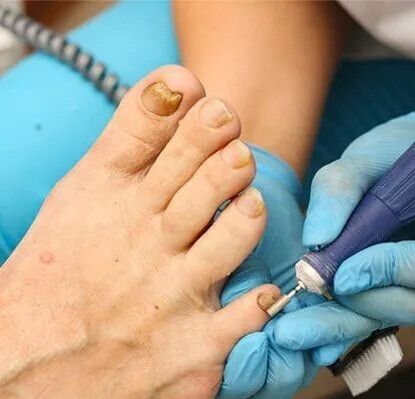Antifungal Medication
Oral antifungal treatment options carry the medication through your bloodstream to the nail bed without the need to penetrate through the nail plate (as per a topical treatment).
Typically, in New Zealand, GPs will prescribe Lamisil (terbinafine) or Sporanox (itraconazole). A successful result can be expected in up to 55% of patients.
What oral medications are available?
Typically, in New Zealand, GPs will prescribe Lamisil (terbinafine) or Sporanox (itraconazole), however, other drugs may be prescribed in accordance with your GP.
How do I get diagnosed?
Your diagnosis takes place during a consultation with our Foot Foundation clinician. They will take a thorough medical history, consider your risk factors, complete a comprehensive physical examination and use a Diafactory fungal nail test to correctly diagnose your fungal infection. Diafactory fungal nail tests involve taking a clipping of your toenail, taking photos of your infected nails and measuring the line of fungal growth from the base of the nail so we can monitor your treatment over time.
Once a correct diagnosis has been made, your Foot Foundation clinician will discuss the most appropriate treatment protocol with you and answer any questions that you may have.

Who should use oral antifungal medication?
Foot Foundation does not recommend oral antifungal medication as a first line of fungal treatment for infections that cover less than 50% of the nail.
However, fungal nail infections that cover more than 50% of the nail and affect the nail root may require a course of oral anti-fungal medication.
Oral antifungal medications work through the body and may interact with other drugs a patient is taking, which can be toxic to the liver. Therefore, the decision to use oral medication will ultimately be made by the patient’s GP who will consider their medical history when prescribing this medication.
What is involved in the oral treatment process?
An oral treatment will need to be prescribed by your GP due to the patient’s individual medical history and medications that need to be considered first.
Once an oral treatment has been prescribed, before you begin your oral treatment, your Foot Foundation clinician will trim, thin and debride your nails to remove as much of the fungal infection as possible. You will receive important information about appropriate hygiene and prevention methods to reduce re-infection rates during and after treatment.
We strongly recommend that our patients undertake topical treatment (Rejuvenail) or laser treatment with or without a total nail avulsion, in conjunction with oral medication as this has been shown to improve the clearance rate of severe fungal infections.
We recommend that patients return to see their Foot Foundation clinician regularly if they are undertaking oral treatment as a standalone treatment.
Generally, we ask patients to return for review appointments for up to 12 months before they are discharged from an oral treatment programme.
If you are undertaking a combination of treatments, you may be required to follow up with your clinician more regularly.
Do I have to do anything with my nails whilst undergoing a course of anti-fungal medication?
At Foot Foundation, we strongly advice a combined approach to improve your infection outcome. Implementing a nail lacquer treatment alongside oral anti-fungal treatment has been found to increase the percentage of total fungal nail clearance without an increase in adverse effects, when compared to oral medication alone.
Typically, we recommend a course of Rejuvenail (topical treatment) alongside a course of oral medication.
A 3-month clinical review will determine whether a total nail avulsion OR cold laser treatment is appropriate to help complement your oral anti-fungal medication.
Take Action Now for Healthier, Clearer Nails!
Don't let fungal nails keep impacting your life. Seek treatment early for quicker improvement.
At Foot Foundation, we focus on clear communication and specialised care. Our custom treatment plans are aimed at restoring your nail health efficiently.
Ready for healthier nails?
Ready to start your journey to healthier nails?
Click below to book today. With Foot Foundation, you’re in expert hands—let’s tackle those fungal nails together.

